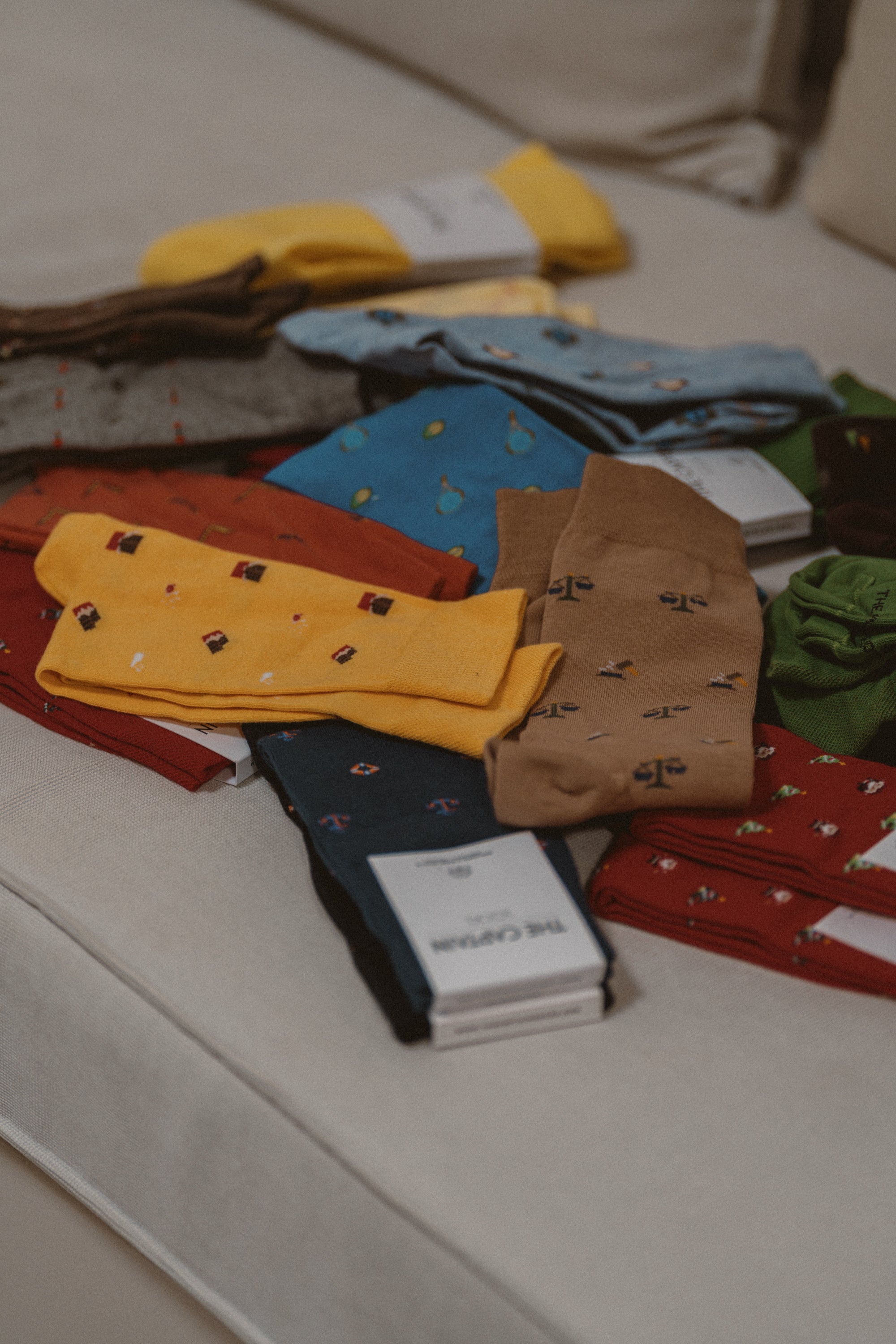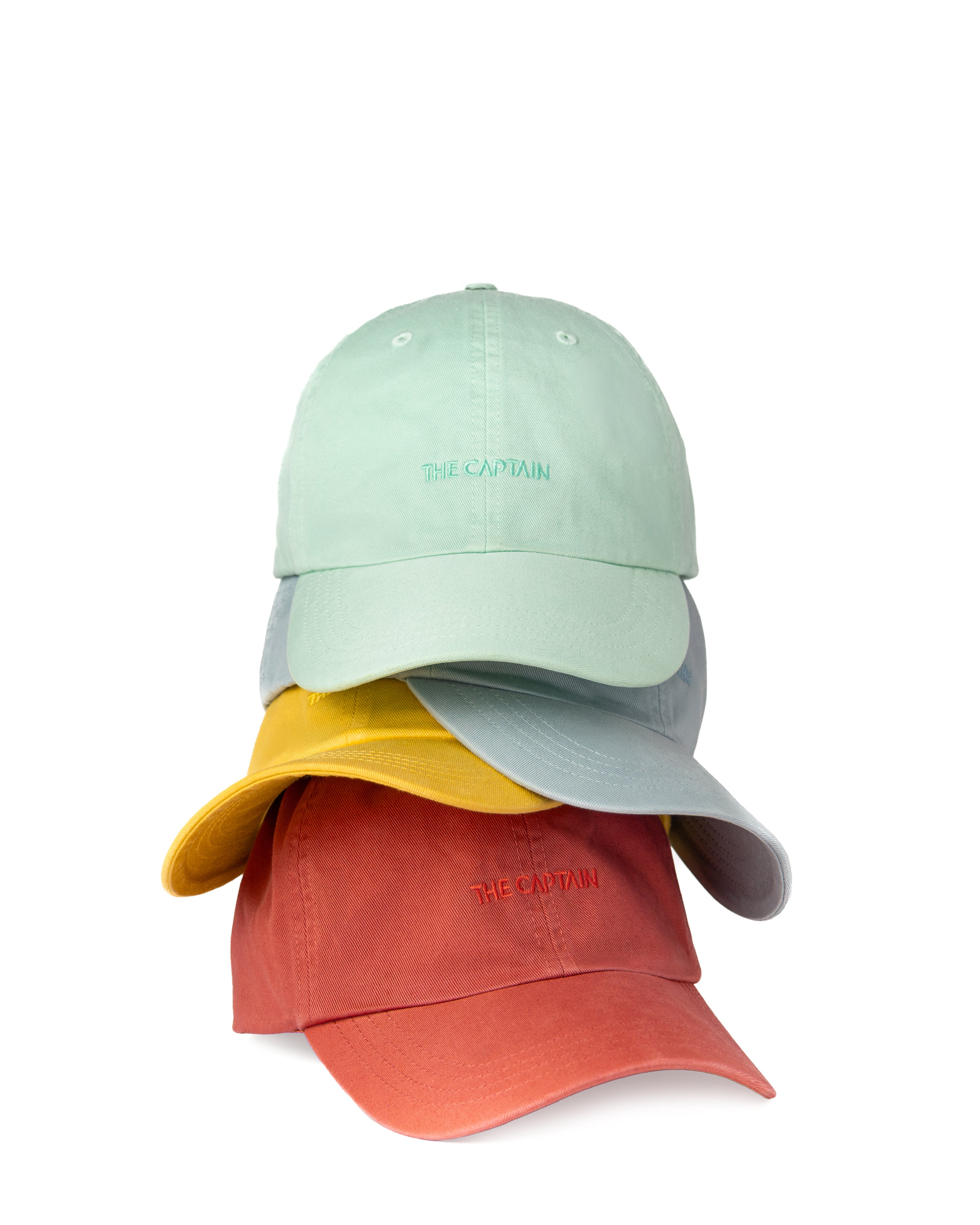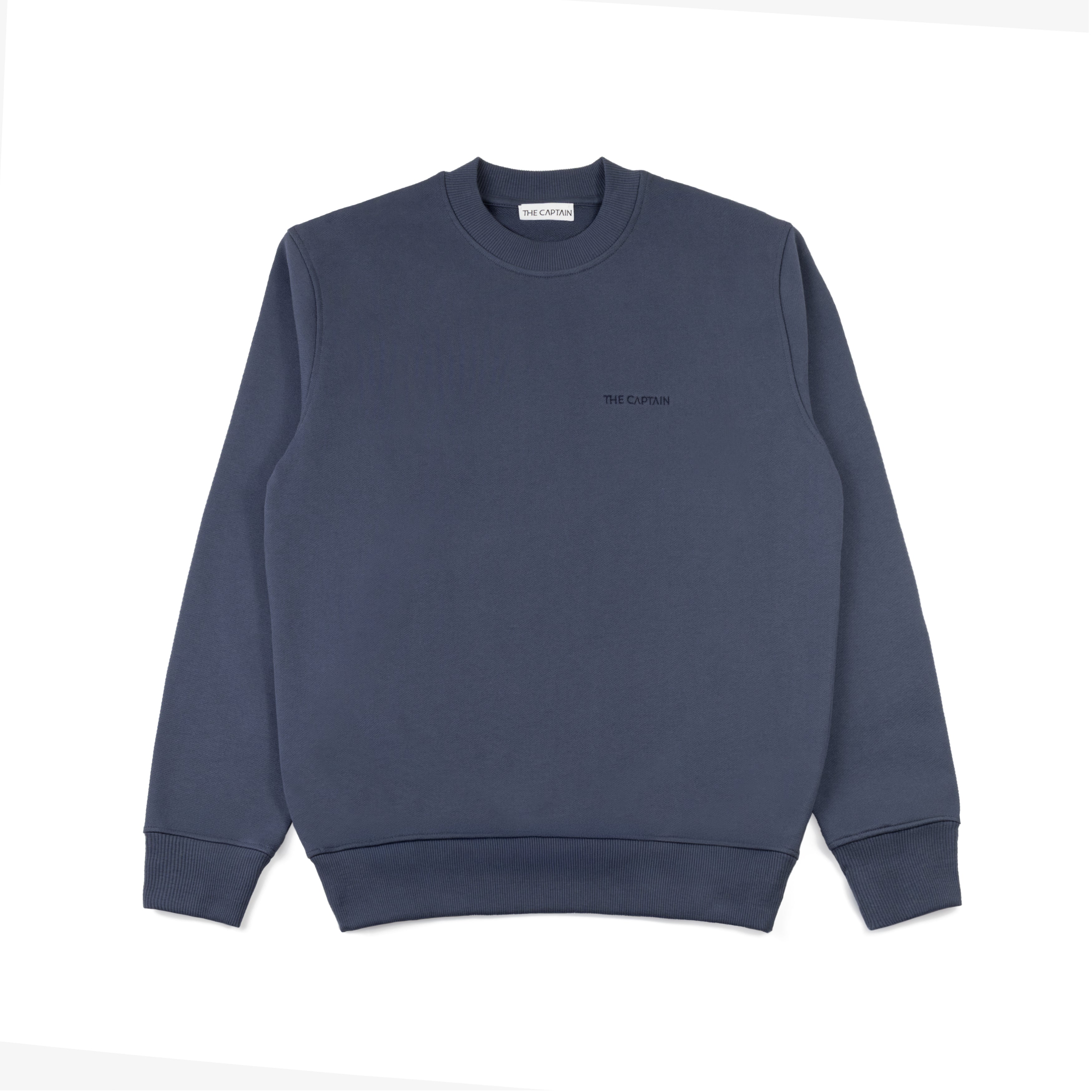
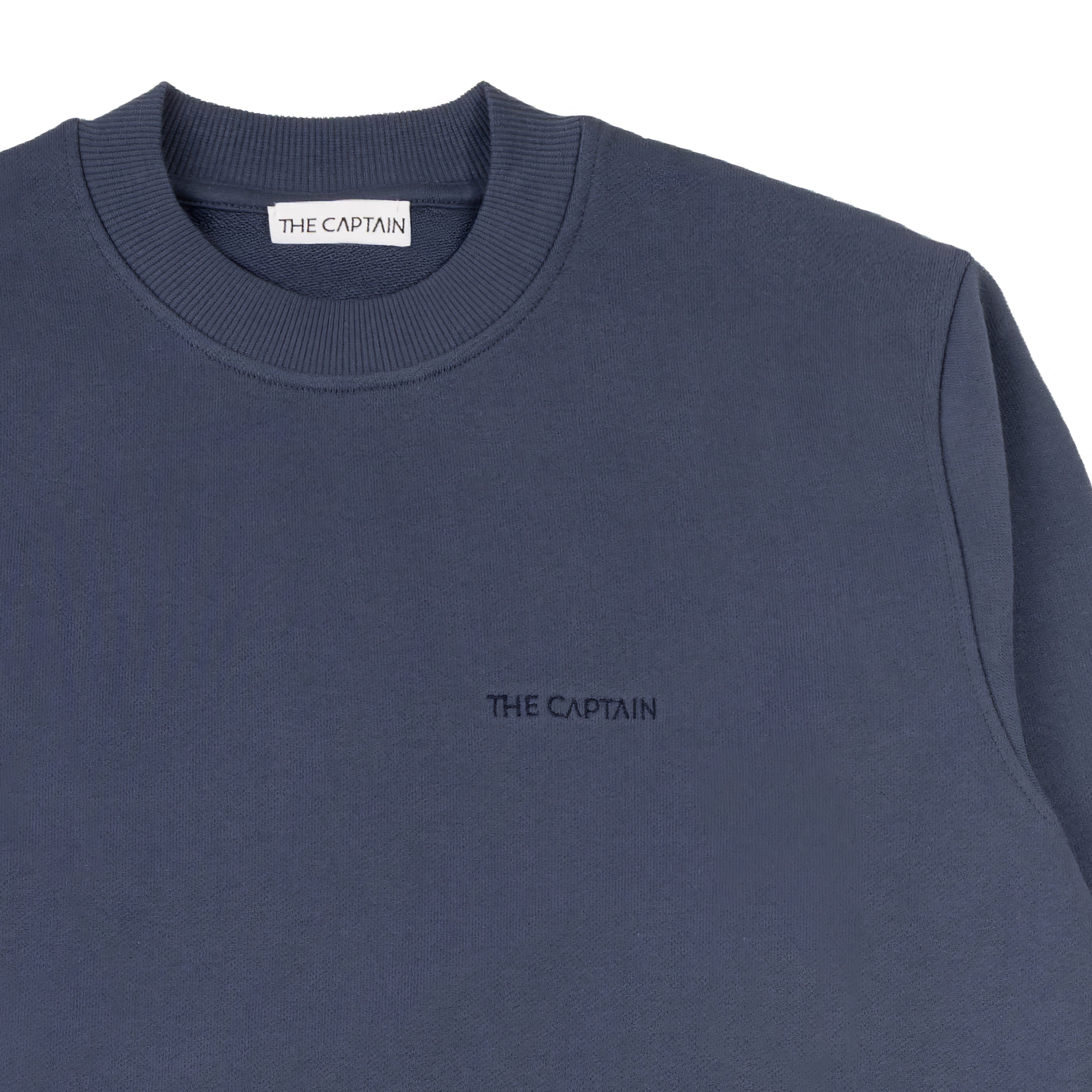
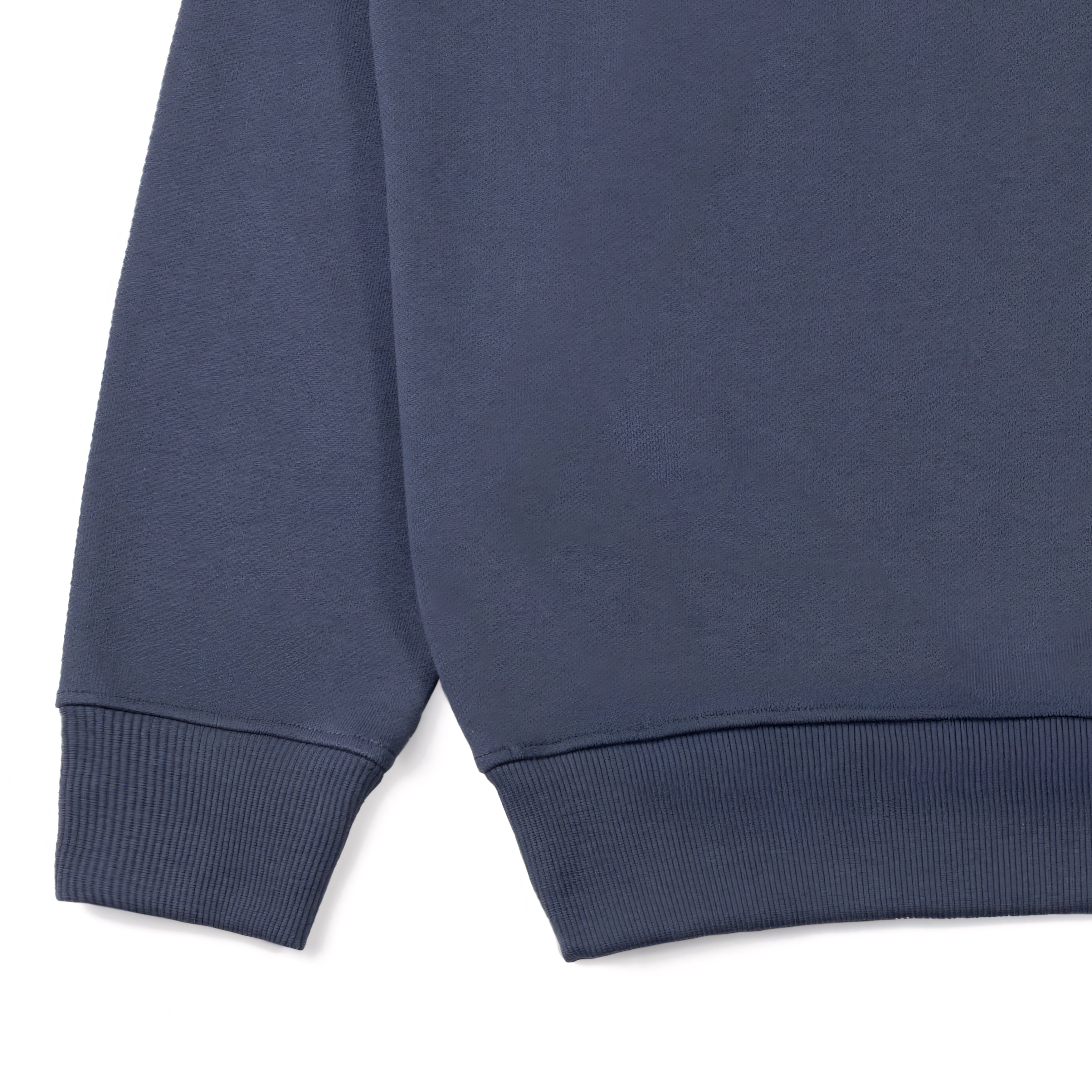
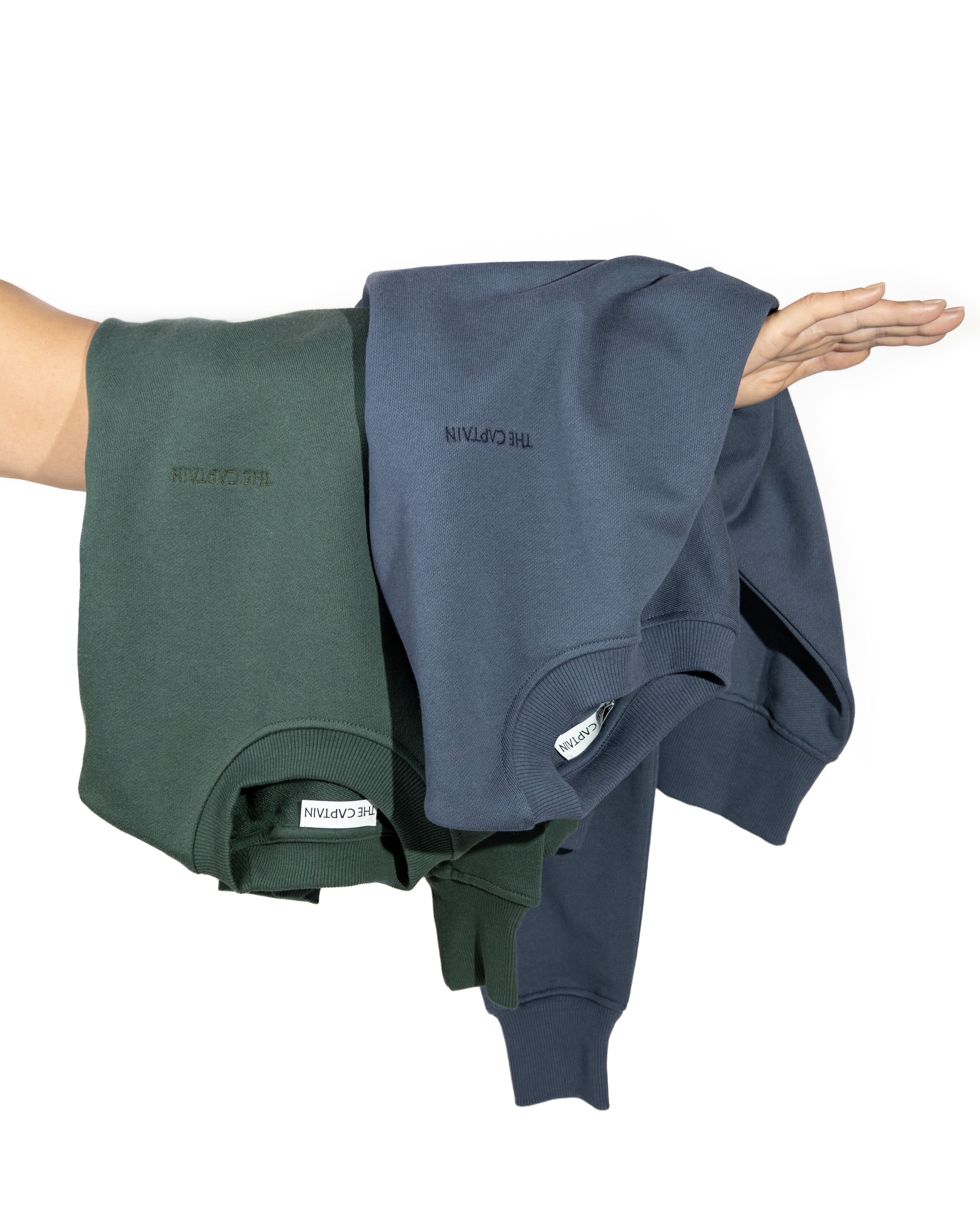
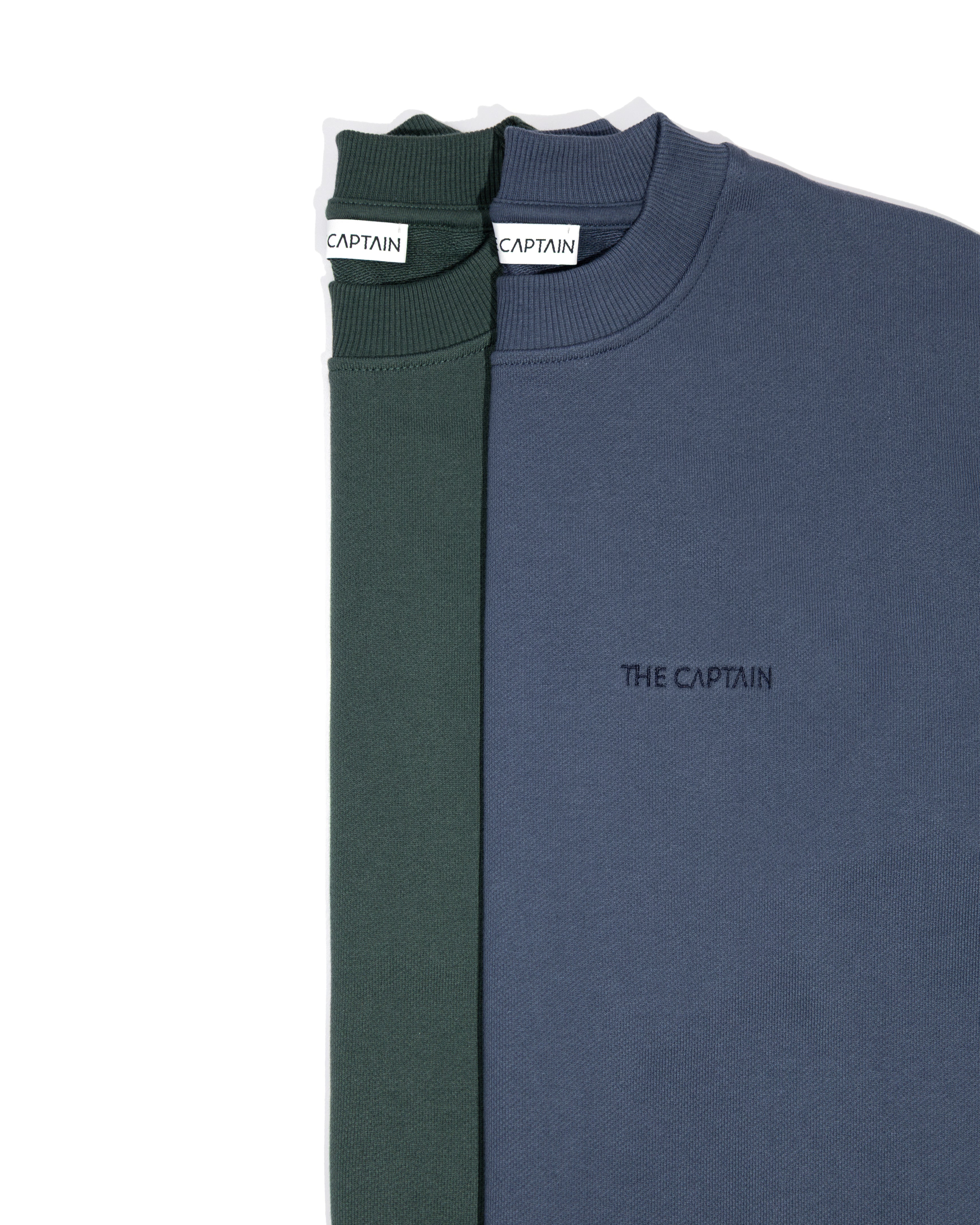
The Jersey TC1 - BLUE
Tax included.

Product Life Cycle Analysis
The Captain Jersey is made from 100% organic cotton, grown without harmful chemicals or GMOs and using half the water of conventional cotton.
Crafted from a 460 GSM heavyweight French terry, it delivers both comfort and lasting durability. The 2×2 rib cuffs feature 5% Lycra, ensuring a flexible fit that keeps its shape over time.
Cut in a regular fit, it offers a clean, balanced silhouette that suits every body type. Pre-shrunk (0–3%) to maintain its size and structure wash after wash.
Made in Portugal, it stands out for its premium craftsmanship, reinforced double-stitched shoulders, and timeless design — a refined essential built to last.

Choose options





Tax included.



